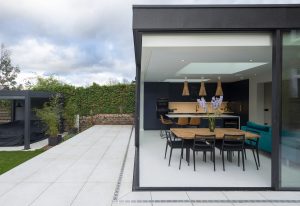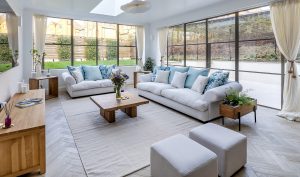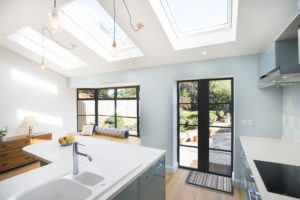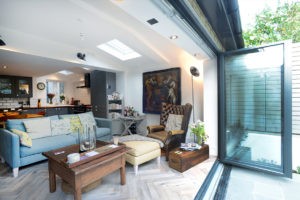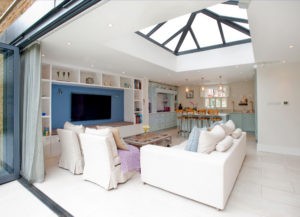Many home-owners find that they have a conservatory attached to their home which they do not fully use as it has become a convenient bike store or a good place to dry washing!
Replacing an existing conservatory with a new extension is becoming an increasingly popular home improvement project for house owners wanting to maximise the space, comfort and functionality of their home.
In this article, we’ll explore the benefits, considerations and key steps involved in transforming your conservatory into a modern extension that truly elevates your living space.
Why Replace an Existing Conservatory with an Extension?
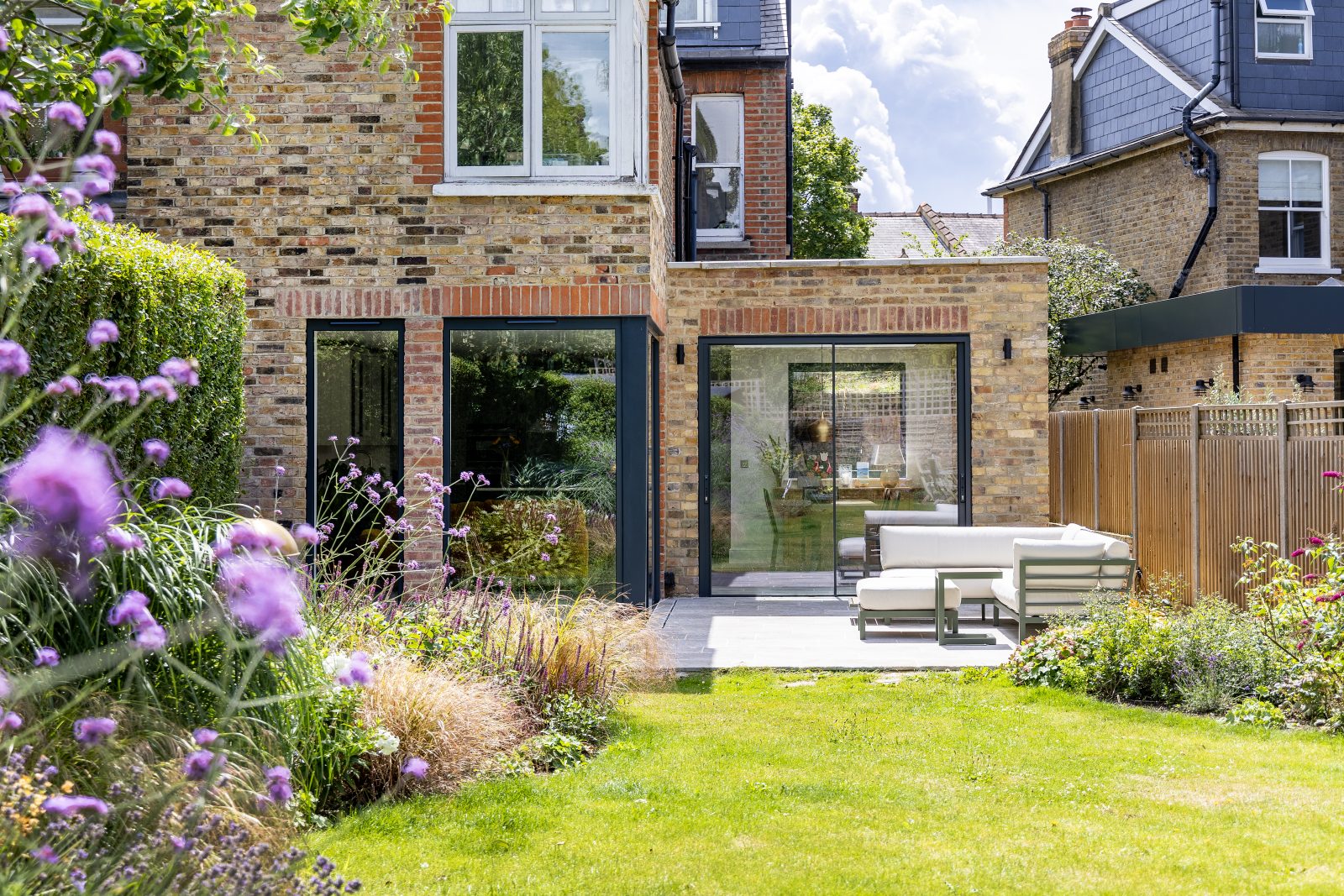
Whilst conservatories usually offer a bright, airy environment, they can sometimes fall short in terms of year-round usability. This is usually because they have a large area of glass and limited insulation and this means they become uncomfortable in extremes of weather.
Conservatories can get uncomfortably hot like a greenhouse in the summer and too cold in the winter as they have poor heat retention. Heating is usually provided by a portable electric heater which is expensive to run and not particularly efficient. Conservatories often have structural limitations and lack strength to support heavier, more substantial roofing or more complex designs to make them more versatile.
An extension, on the other hand, offers a more versatile solution, allowing for better insulation, improved design options and enhanced integration with the rest of the home. Conservatories also add less value to your property. Replacing a conservatory with a brick extension will – depending on the size of the extension – increase the value of your property significantly.
So now you’re thinking a little about replacing your conservatory; let’s take a look at the benefits when you replace a conservatory with an extension.
Benefits of Modern Extensions
There are multiple benefits from replacing your old conservatory with a quality modern extension. A conservatory to extension conversion should be aesthetically pleasing to you and your neighbours. A brick extension can be in a style that accentuates the character of your house.
As previously mentioned, to replace a conservatory with an extension can add significant value to your house. Modern extension ideas for homes generate both additional living and storage space. Using best materials for home extensions will ensure that the extension is durable and that the temperature in the extension is more controllable, making it more comfortable – all year round.
1. Better insulation and heat efficiency

Conservatories – particularly older ones – prove difficult where temperature regulation is concerned. Choosing an energy-efficient house extension with improved insulation will ensure that the space is always comfortable for use.
If the heating for the extension is connected to the main house heating system, this will be more cost-effective. If you ensure that you choose an energy-efficient house extension there will be less reliance on heating and cooling systems through the year.
2. Lower maintenance
Replacing the conservatory with a brick extension can reduce maintenance costs as conservatories often end up having draughty gaps. These are caused by their construction design and sometimes by any minor movement. Conservatories are usually bolted to an exterior wall. This is where the gaps are likely to occur. Extensions are typically built with more robust materials that provide greater durability.
A high percentage of windows and glass is used in conservatories and seals are often damaged. Wooden frames, become damaged too. This can be caused by general wear and tear- and by the weather. In time, this leads to more heat waste and higher heating costs.
3. Increased property value
A quality-built extension makes a permanent and high quality addition to a home. Andrew Harvey, Senior Economist at Nationwide said in a 2023 that home improvements that add floor area to a property can increase the property value by up to 25%.
This figure depends on several factors including size and quality of the extension. One of the modern extension ideas that increases value for homes is a larger, modern kitchen. Replacing a conservatory with a brick extension can certainly enhance the overall appeal and functionality of a home.
Compared to extensions, conservatories are usually viewed as more temporary structures. An article in On The Market states:
‘The figure of five per cent is regularly cited, although, Savills has put a figure as high as 12 per cent on high-quality conservatories in prime London properties’.
4. More workable space

Modern extensions are now seamlessly integrated in the main house. The new space created is both versatile and very usable. If you choose a top company, you will get good advice on conservatory removal and extension guide and a quotation for the cost to replace a conservatory with an extension.
Build Team is an extension specialist with years of experience and its consultants can offer plenty of great design ideas so that the new extension is perfect for your family’s individual needs. Match the aesthetics of your home with your new extension. Unlike a conservatory, the extension will not look like an add-on.
You are always much more restricted with a conservatory as you usually have to pick a design from a range in a catalogue or store. Modern extensions are more flexibility in design. Choose a customised design to suit your individual needs.
5. Great versatility
An extension is a great way to enjoy a larger kitchen, gain some office space or add an extra bedroom to your home. All of these options are ideal if you have a growing family with changing needs. The cost to replace a conservatory with an extension is much less than having to move house. Extensions are more practical than conservatories. Conservatories are more limited in their use and more ornamental in their appeal.
6. Energy efficiency upgrades
There are multiple ways to gain better energy efficiency from your extension. Good insulation ensures good control of temperatures. By using glass, you can increase the amount of natural light to not lower electricity costs and create the feeling of bringing the great outdoors into your home. High-performance windows and doors are good draught-proofing measures. If you need to add heating, a low-carbon heating system is the environmentally-friendly option.
7. Better planning and building regulations
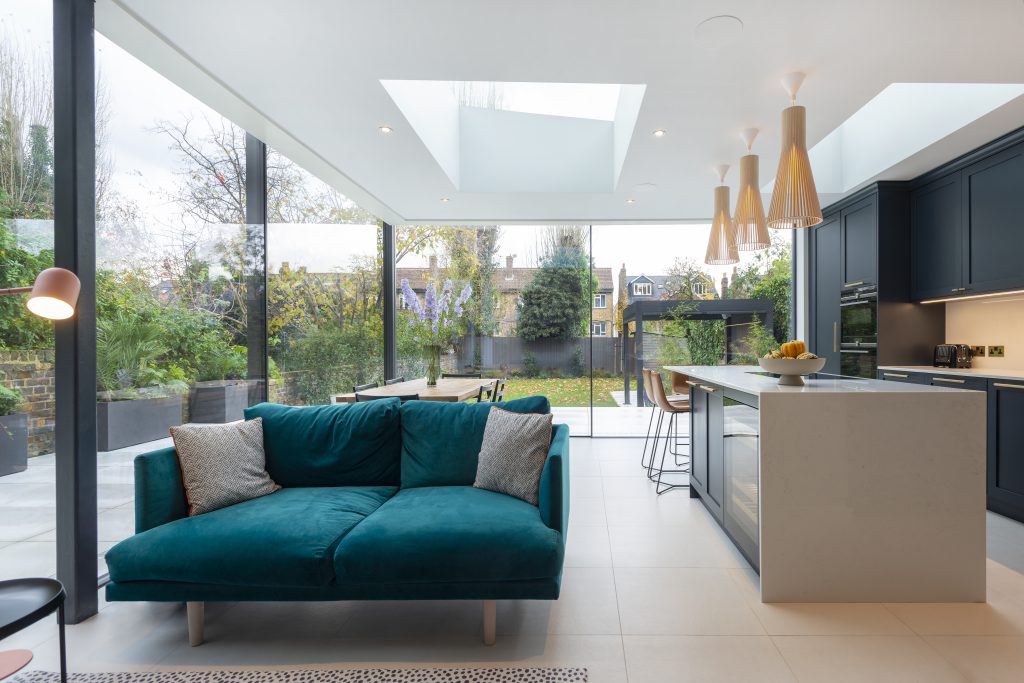
Usually extensions are subject to more detailed planning and stricter building regulations. This ensures that the conservatory is well-built, energy-efficient and meets all safety standards. Conservatories are not usually subject to these standards and this can lead to potential problems in the future.
Planning permission may not be needed- if the replacement extension will be the same size. However, it is vital that you check with your local authorities. Different authorities have different regulations regarding planning permission. Some may require you to gain building regulations approval for the project to ensure it is suitable.
Local councils all have their own rules in regards to planning permissions as well as rules regarding zoning laws etc. It is advisable that you become familiar with the building rules in your area, by speaking with our local councillors to ensure you have the right permissions in place.
A structural assessment is usually required. This determine whether the building is safe and that it meets current building codes. It is important to get this done as again it will save problems in the future and will also alert you to any problems that may need rectifying.
8. Good choice of best materials for home extensions
There are many different materials to consider when replacing your conservatory with an extension. Popular options include brick which gives a good match to the original building, or wood which offers a rustic classical character.
Incorporate as much glass as your design, it will create the feel of a conservatory, but with better temperature control. You can chose one or a combination of these materials to create a design that is unique and aesthetically pleasing to you.
9. Greater privacy
Most conservatories feature a large expanse of glass which offers less privacy. In contrast, replacing a conservatory with a brick extension with solid walls and strategically placed windows ensures much greater privacy.
Budgeting Tips for Home Extension After Conservatory

There are a few ways you can make your extension more budget friendly. One idea is to opt for a simple design as the more elaborate, or complex the design the more it will cost. Save money by designing the extension yourself. Get help from skilled professionals to adjust your design.
If you plan ahead and work with a top company you can ensure your budget will be adequate. Avoid any nasty expensive surprises by getting a fixed price building contract. Think thrifty! Can old materials from the conservatory be re-used in the new extension?
Typical Project Duration
The typical time-frame for replacing your conservatory with an extension is between 4 -12 weeks. This is dependent on a few factors, including the complexity and size of the project.
Why Not Find Out More?
These are just some of the benefits to replacing your conservatory with an extension, we’re sure you can find many more benefits with your own conservatory to extension conversion. Why not start the conversation with Build Team?
Please give us a call at 0207 495 6561 or email: hello@buildteam.com to speak with a member of the Build Team enquiries team


